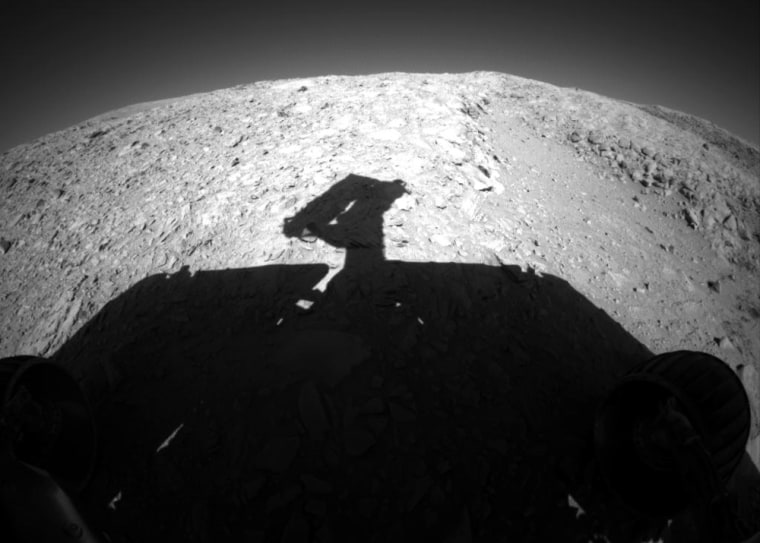A steering problem disabled the Mars Rover Spirit Oct. 1, NASA officials said Tuesday. The robot has not moved since.
While a fix of some sort is expected, Spirit could proceed with a greater chance of causing other problems.
The robot's right-front and left-rear wheels "did not operate as commanded" on the first day of the month, the space agency said in a statement. Engineers are investigating possible causes and remedies, which might include disabling the brakes on the two wheels so the craft can proceed with its mission in a hampered fashion.
Separate relay switches for steering actuators — small motors that control the steering to each of the two wheels — are affected. The wheels turn independently, and the steering setup works separate from the motor that makes the wheels roll.
When the actuators are not in use, electric relays are closed and the motor acts as a brake to prevent unintended changes in direction, according to the statement.
Diagnostic tests were performed and the results were beamed back to Earth on Tuesday.
"We are interpreting the data and planning additional tests," said Rick Welch, rover mission manager at NASA's Jet Propulsion Laboratory in Pasadena, Calif. "We hope to determine the best work-around if the problem does persist."
Increased risk
One possible solution is to disable the brakes. But that would put the rover at increased risk.
"If we do not identify other remedies, the brakes could be released by a command to blow the fuse controlling the relay, though that would make those two brakes unavailable for the rest of the mission," said JPL's Jim Erickson, rover project manager.
Without the brakes on two wheels, small bumps or dips might twist the wheel away from the intended drive direction. Such problems might be minimized "by continuing to use the brakes on the left-front and right-rear wheels, by driving in smaller segments, and by adding a software patch to reset the direction periodically during a drive," Erickson said.
Engineers believe the steering-brake issue is not related to excessive friction detected during the summer in the drive motor for Spirit's right-front wheel, because the steering actuator is a different motor.
Climbing into the hills
Spirit has driven more than 2.2 miles (3.6 kilometers) and was climbing into uplands called the Columbia Hills when the problem arose. For now, scientists continue to use Spirit's robotic arm and camera mast to study rocks and soils around the rover, without moving the vehicle until the brake problem is resolved.
Mechanical problems are no great surprise. Spirit and its twin, Opportunity, landed in January and were guaranteed for just 90 days of operation. They completed those respective primary missions in April, then finished up five-month mission extensions in September. The robots began second extensions of their missions on Oct. 1.
